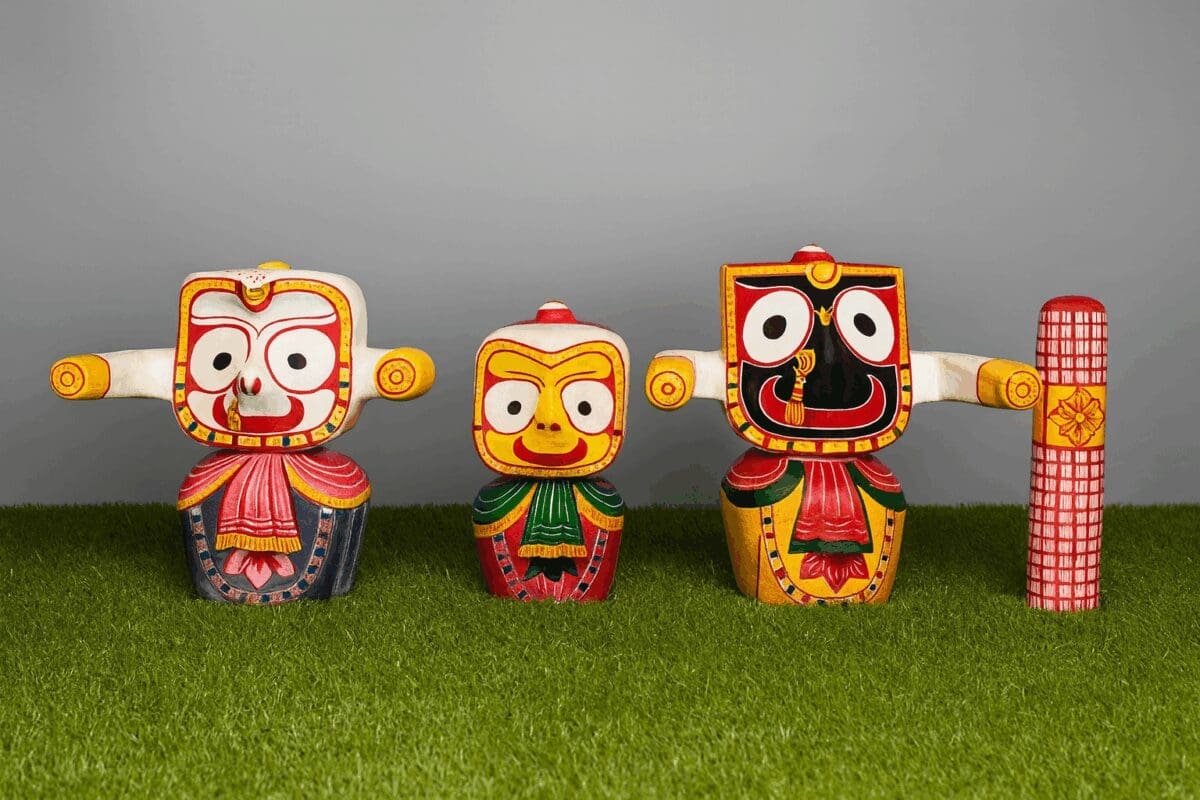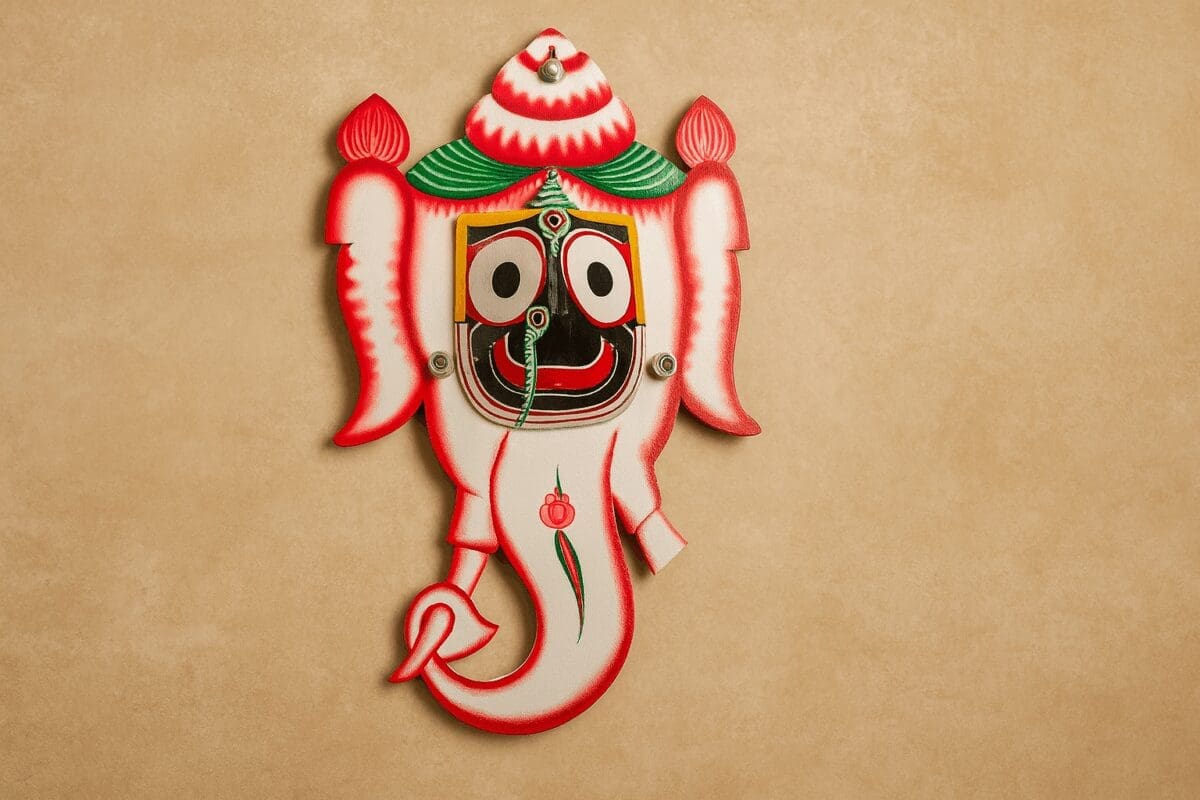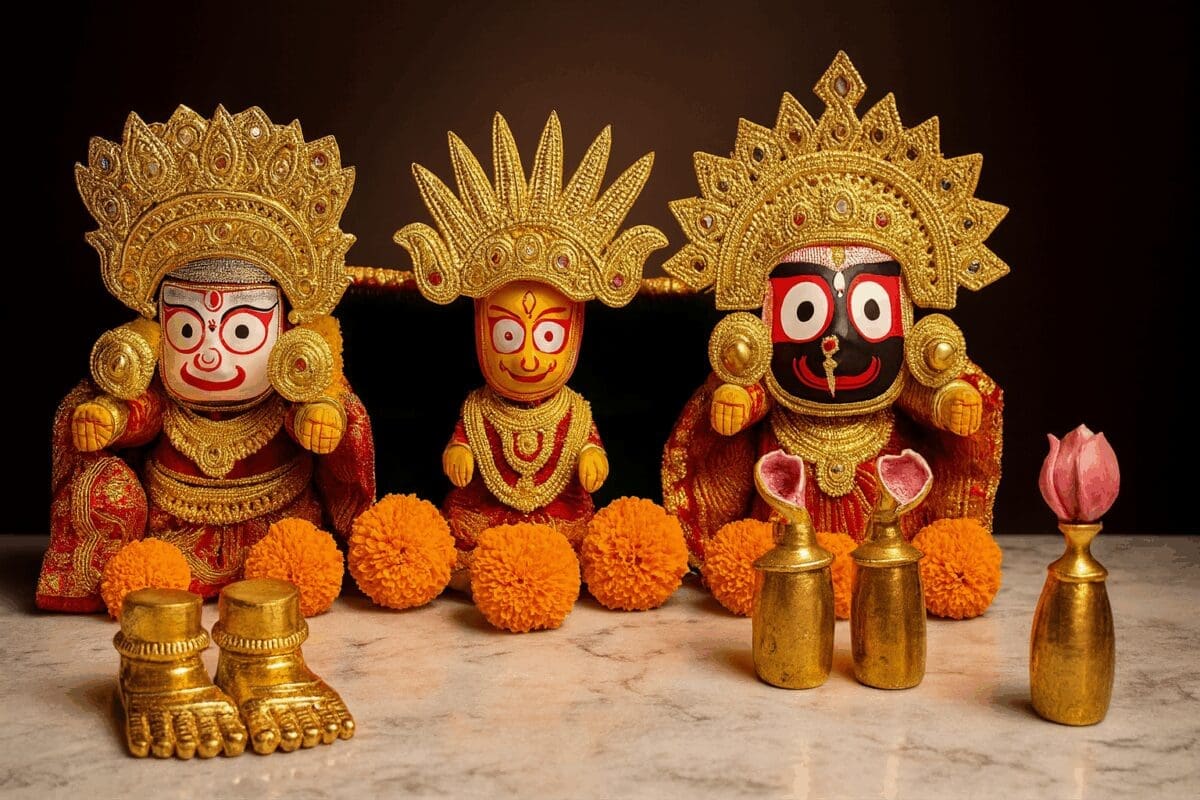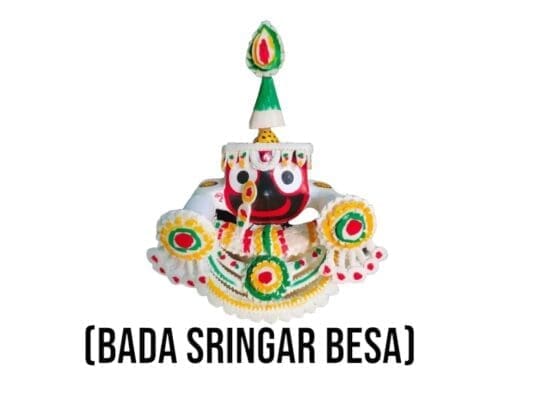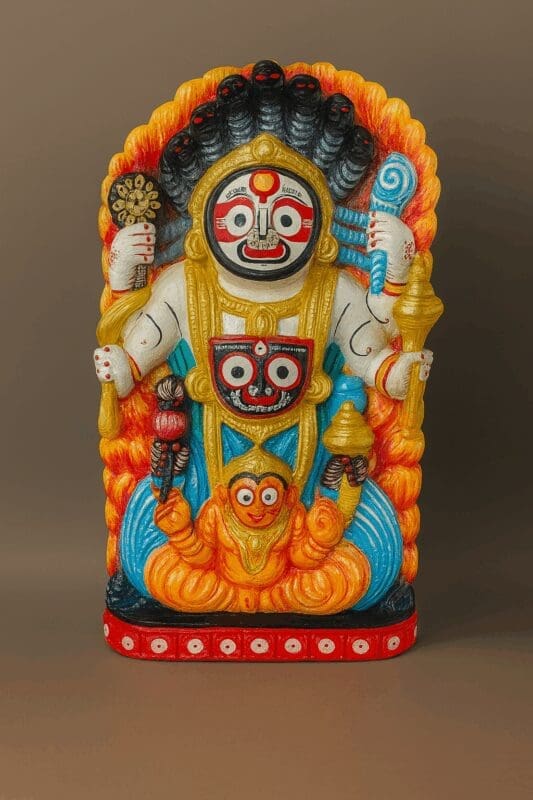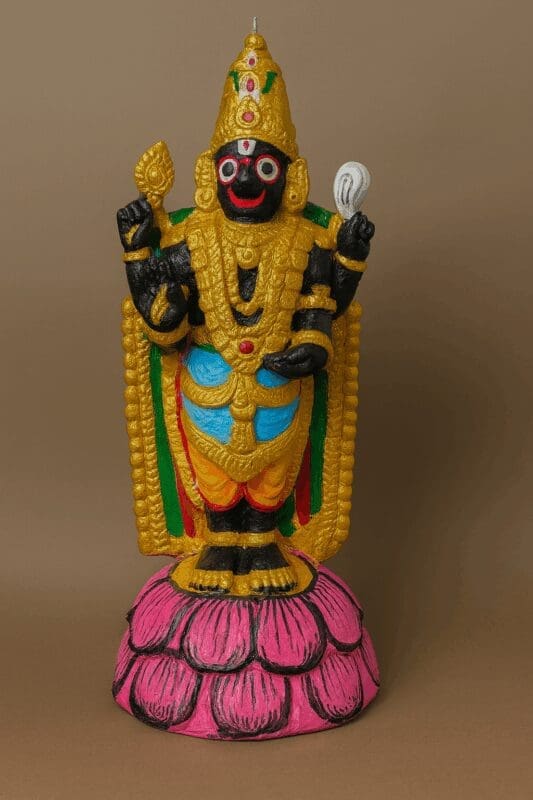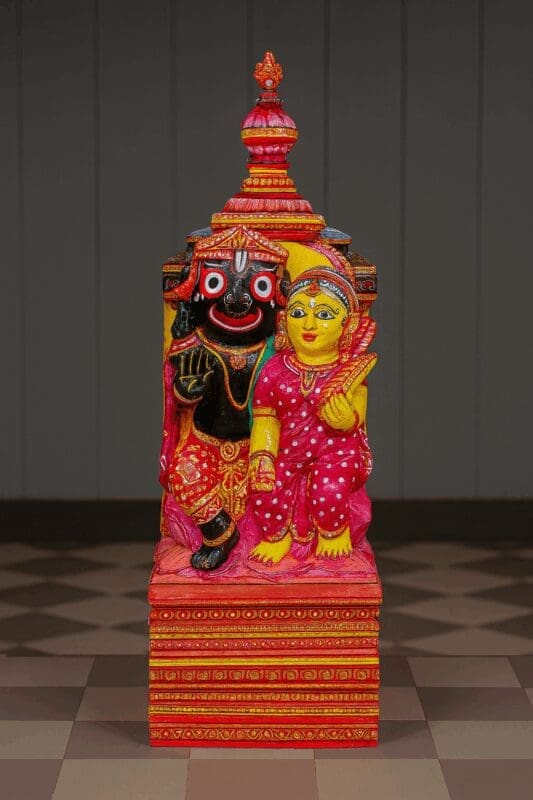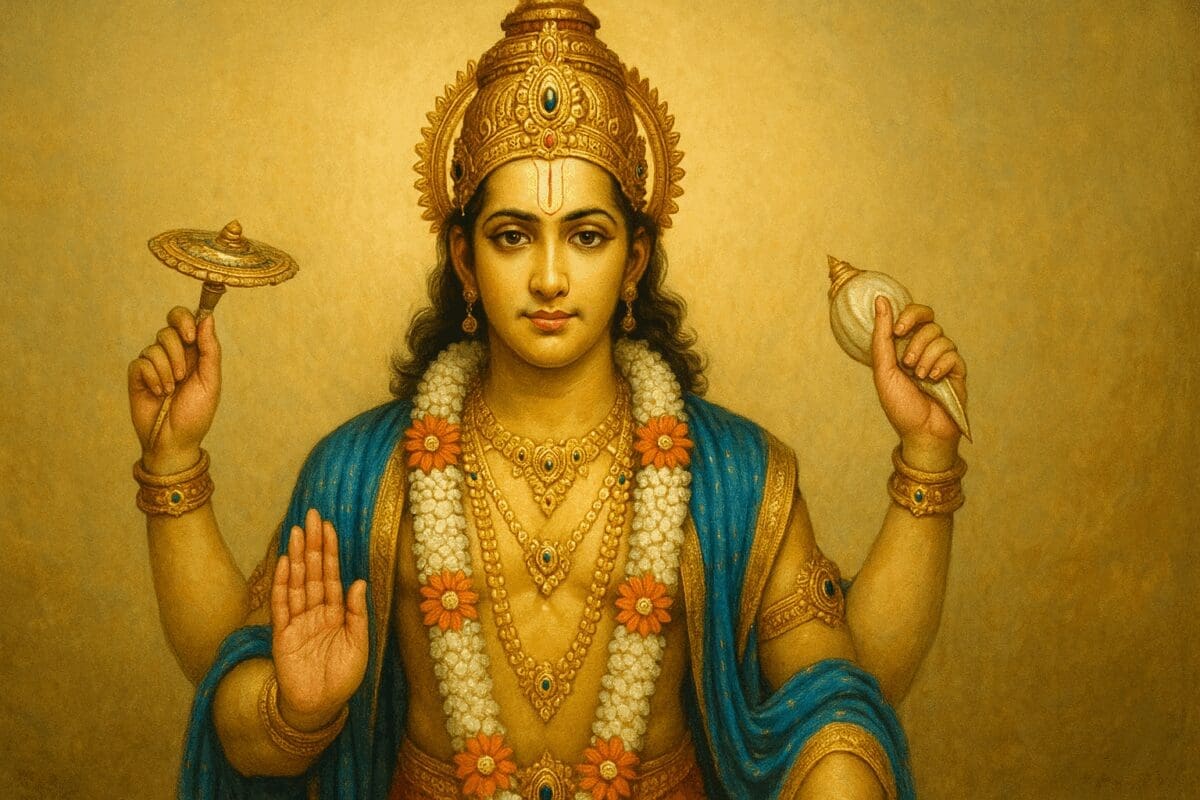Vaijayanti Mala: Vishnu’s Garland of Victory and Liberation (Ch. 32)
Chapter 32 of “Sri Jagannath Puran” shifts our attention from the individual attributes of Lord Vishnu to a symbolic adornment of great significance: the Vaijayanti Mala, a celestial garland believed to bestow victory and spiritual liberation. As a historian fascinated by the symbolic language of ancient texts, this chapter offers a captivating exploration of the Vaijayanti Mala’s origins, its mystical properties, and its role in representing divine grace and the triumph of good over evil.
Vaijayanti Mala: A Garland of Divine Blessings
The Vaijayanti Mala, a garland composed of five celestial flowers, is often depicted adorning Lord Vishnu’s neck. It is believed to be a gift from the goddess of wealth, Lakshmi, symbolizing prosperity, victory, and spiritual liberation.
Historically, garlands have held cultural and religious significance in various societies, often used in rituals, celebrations, and as symbols of honor and respect. In ancient India, garlands were particularly associated with deities and were believed to possess auspicious and purifying qualities. The “Sri Jagannath Puran” reflects this tradition by dedicating a chapter to the Vaijayanti Mala, highlighting its divine origins and its association with Lord Vishnu’s grace and power.
Symbolism of the Garland: Victory, Prosperity, and Liberation
The chapter describes the Vaijayanti Mala as a symbol of victory, prosperity, and spiritual liberation. It represents the triumph of good over evil, the attainment of material and spiritual goals, and the liberation of the soul from the cycle of birth and death.
The five flowers that compose the garland are believed to represent the five senses, symbolizing the control and transcendence of sensory desires on the path to spiritual awakening. The garland also represents the interconnectedness of all creation, with each flower symbolizing a different aspect of the universe.
Mystical Dimensions: The Garland’s Divine Attributes
The chapter imbues the Vaijayanti Mala with mystical qualities, portraying it as a source of divine energy and a symbol of spiritual protection. It is believed that meditating on the Vaijayanti Mala or reciting hymns dedicated to it can bestow various benefits, including victory over enemies, prosperity, good health, and spiritual enlightenment.
The text also suggests that the Vaijayanti Mala represents the divine feminine principle, Shakti, the creative energy that sustains the universe. This association with Shakti further enhances the garland’s significance as a symbol of beauty, abundance, and spiritual power.
Connecting with the Present: The Enduring Symbolism of the Garland
Garlands continue to be an important part of Hindu rituals and celebrations today, symbolizing auspiciousness, beauty, and devotion. The Vaijayanti Mala, though a celestial adornment, serves as a reminder of the divine qualities of victory, prosperity, and spiritual liberation that individuals can strive to attain through spiritual practice and devotion.
For the modern reader, this chapter offers a glimpse into the rich tapestry of Hindu symbolism and the diverse ways in which the divine is represented and invoked. It encourages us to appreciate the deeper meanings embedded within religious traditions and to recognize the power of symbols to inspire and uplift the human spirit.
https://justkalinga.com/wp-admin/post.php?post=15740&action=edit&classic-editor
 "Shri Jagannath Puran Kritan" Audio One to Three Adhhaya(Part)
₹ 599.00
"Shri Jagannath Puran Kritan" Audio One to Three Adhhaya(Part)
₹ 599.00 Golden Radiance jagannath Trio
₹ 10,249.00
Golden Radiance jagannath Trio
₹ 10,249.00 Dhyana Yantra
₹ 105,625.00
Dhyana Yantra
₹ 105,625.00 Grace Shawl for Pooja/fastival moments and Temple Visit
From ₹ 675.00
Grace Shawl for Pooja/fastival moments and Temple Visit
From ₹ 675.00 Shri Gita gobindam Book
Shri Gita gobindam Book
 Bije kahali For Shri Jagannath Mahaprabhu
Bije kahali For Shri Jagannath Mahaprabhu


 Golden Radiance jagannath Trio
Golden Radiance jagannath Trio 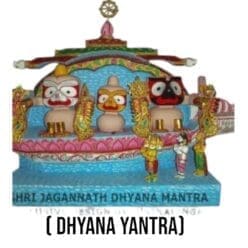 Dhyana Yantra
Dhyana Yantra 


